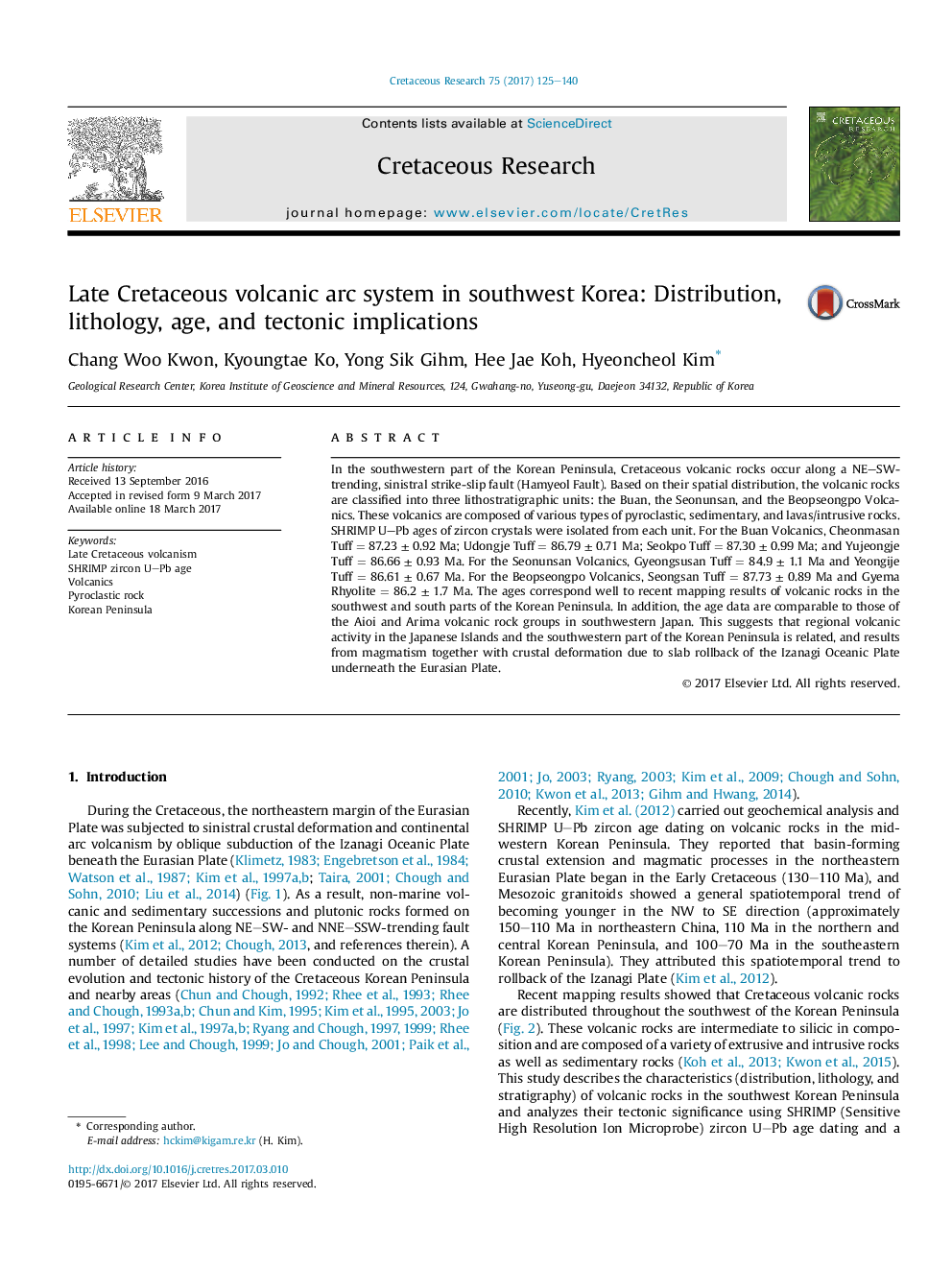| کد مقاله | کد نشریه | سال انتشار | مقاله انگلیسی | نسخه تمام متن |
|---|---|---|---|---|
| 5787948 | 1642048 | 2017 | 16 صفحه PDF | دانلود رایگان |
- Four large volcanics along the Hamyeol Fault in southwest Korea are characterized.
- Volcanics are named Buan, Seonunsan, Wido, and Beopseongpo Volcanics.
- Lithological characterization and SHRIMP UPb age dating are conducted.
- Period and mechanism of development are inferred.
- Insight on the history of tectonic movement of the Korea and Northeast Asia.
In the southwestern part of the Korean Peninsula, Cretaceous volcanic rocks occur along a NE-SW-trending, sinistral strike-slip fault (Hamyeol Fault). Based on their spatial distribution, the volcanic rocks are classified into three lithostratigraphic units: the Buan, the Seonunsan, and the Beopseongpo Volcanics. These volcanics are composed of various types of pyroclastic, sedimentary, and lavas/intrusive rocks. SHRIMP UPb ages of zircon crystals were isolated from each unit. For the Buan Volcanics, Cheonmasan Tuff = 87.23 ± 0.92 Ma; Udongje Tuff = 86.79 ± 0.71 Ma; Seokpo Tuff = 87.30 ± 0.99 Ma; and Yujeongje Tuff = 86.66 ± 0.93 Ma. For the Seonunsan Volcanics, Gyeongsusan Tuff = 84.9 ± 1.1 Ma and Yeongije Tuff = 86.61 ± 0.67 Ma. For the Beopseongpo Volcanics, Seongsan Tuff = 87.73 ± 0.89 Ma and Gyema Rhyolite = 86.2 ± 1.7 Ma. The ages correspond well to recent mapping results of volcanic rocks in the southwest and south parts of the Korean Peninsula. In addition, the age data are comparable to those of the Aioi and Arima volcanic rock groups in southwestern Japan. This suggests that regional volcanic activity in the Japanese Islands and the southwestern part of the Korean Peninsula is related, and results from magmatism together with crustal deformation due to slab rollback of the Izanagi Oceanic Plate underneath the Eurasian Plate.
Journal: Cretaceous Research - Volume 75, July 2017, Pages 125-140
